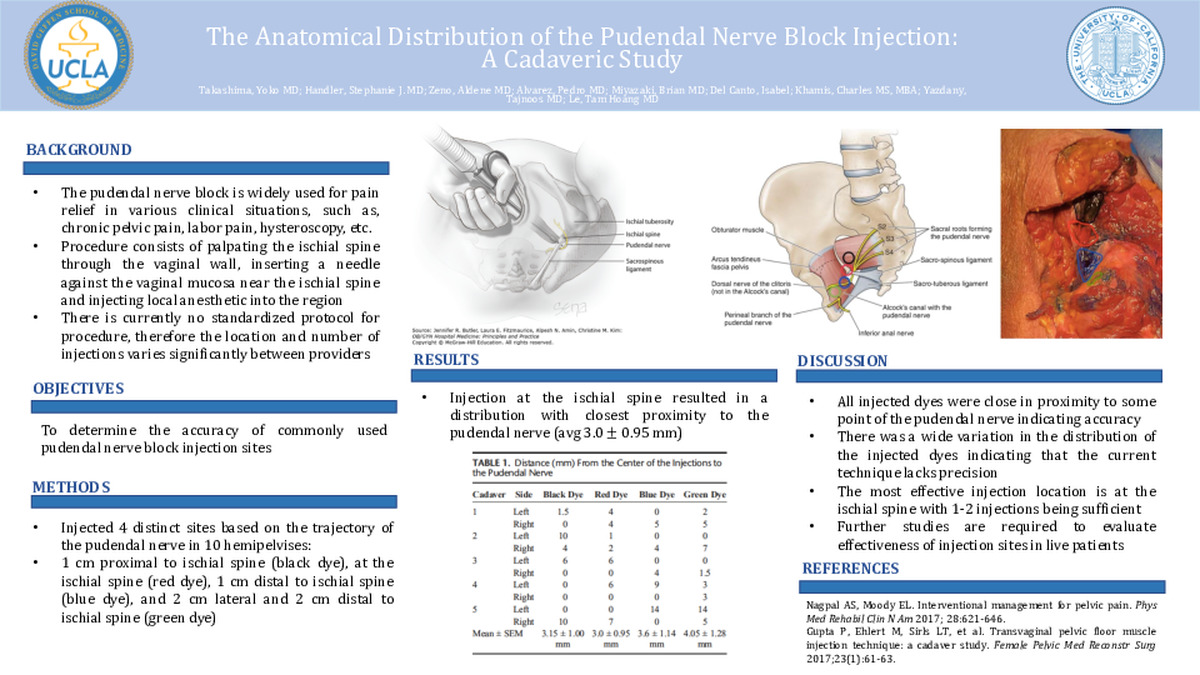-
Author
Isabel Del Canto -
Co-author
Takashima, Yoko MD; Handler, Stephanie J. MD; Zeno, Aldene MD; Alvarez, Pedro MD; Miyazaki, Brian MD; Khamis, Charles MS, MBA; Yazdany, Tajnoos MD; Le, Tam Hoang MD
-
Title
The Anatomical Distribution of the Pudendal Nerve Block Injection: A Cadaveric Study
-
Abstract
Objective: The objective of this study was to assess the accuracy of commonly used injection locations of the pudendal nerve block by examining the proximity of the injected dye to the pudendal nerve in a cadaveric model.
Methods: Pudendal block injections at 4 sites were placed transvaginally on 5 cadaveric pelvises. These sites were 1 cm proximal to the ischial spine (black dye), at the ischial spine (red dye), 1 cm distal to the ischial spine (blue dye), and 2 cm lateral and 2 cm distal to the ischial spine (green dye). The cadavers were dissected via a posterior approach.
Results: We measured the shortest distance from the center of the dye-stained tissue to the pudendal nerve. As expected, the injections at the ischial spine (red) resulted in a distribution of dye closest to the pudendal nerve, averaging 3.0 ± 0.95 mm. Dyes at other sites were close to the nerve: 3.1 ± 1.00 mm (black), 3.6 ± 1.14 mm (blue), and 4.05 ± 1.28 mm (green).
Conclusions: Regardless of the injection site, all dyes were close the pudendal nerve, indicating accuracy. We observed wide variation in the dye distribution even though all injections were performed by the same provider, implicating lack of precision. Based on our findings, we propose that the most effective injection location is at the ischial spine because it is the closest to the pudendal nerve; however, all injections were within 4 mm of the pudendal nerve, suggesting that only 1 to 2 injections may be sufficient.
-
College
AAC
-
Zoom
-
PDF

